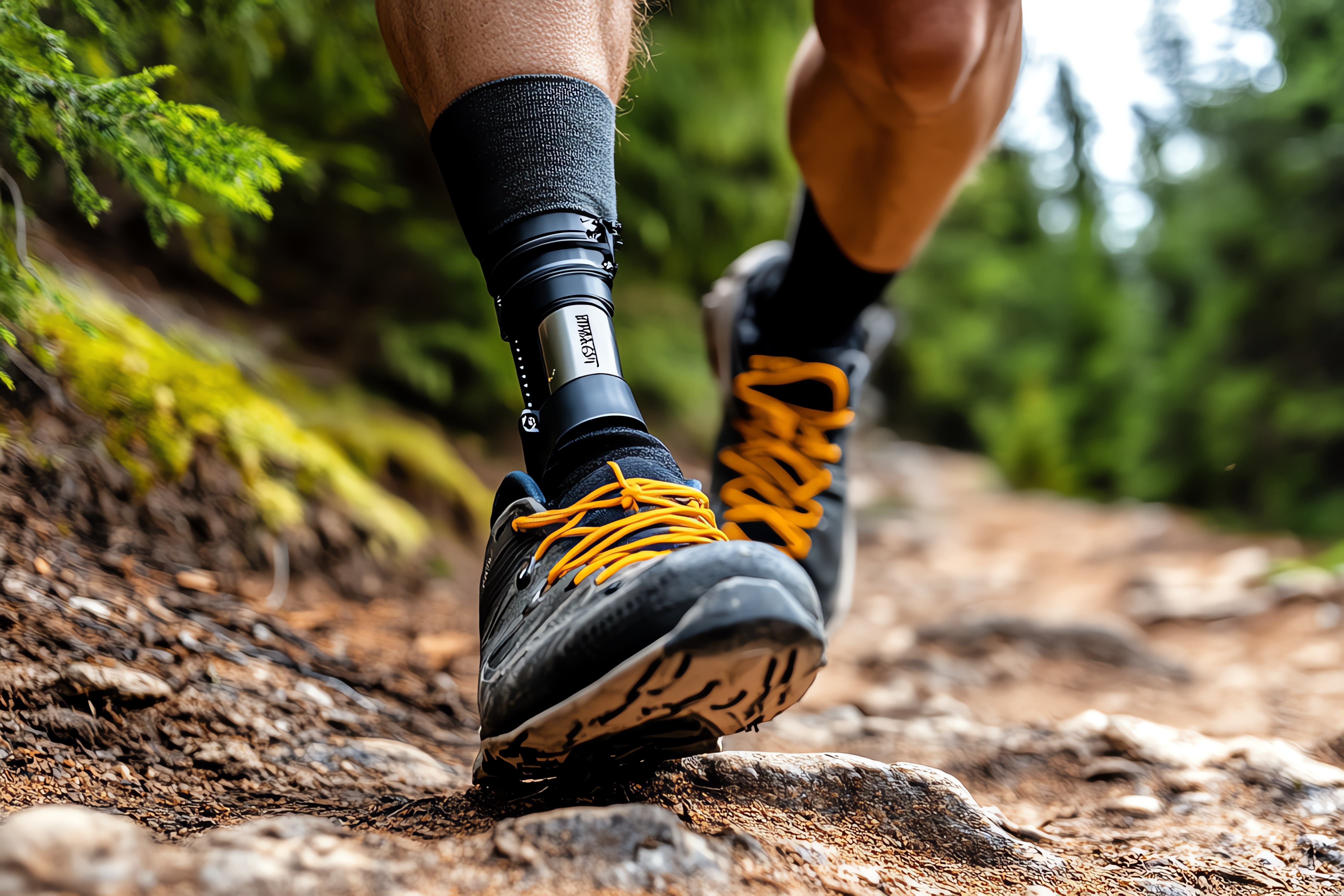Stay in the know - your monthly digest of health news, patient stories and exclusive conversations with CU Medicine providers. Sign up below, plus get a preview of insights delivered straight to your mailbox!
Getting Back in Motion at the CU Medicine Center for Prosthetics
Advancements in prosthetics are revolutionizing the lives of individuals who have experienced limb loss. These innovative devices are enabling people to return to their favorite activities, from everyday tasks to high-level athletic pursuits.
At the forefront of these advancements is the CU Medicine Center for Prosthetics, which opened in August of 2024 in Aurora, Colorado.
The CU Medicine Center for Prosthetics offers custom prosthetic solutions designed to meet the unique needs of each patient. By combining advanced technology with expert care, the center aims to help individuals reclaim their active lifestyles and achieve their personal goals.
We spoke with prosthetist Dan Milius, MS to learn more about advancements in prosthetic technology and how patients he sees can get back to the things they love and even try new activities.

Engineering for a future of prosthesis
In recent years, the field of prosthetics has seen remarkable advancements that are transforming the capabilities of individuals with limb loss. According to Milius, these innovations are particularly impactful for amputee athletes and those pursuing ambitious physical challenges.
"Considering the past decade and beyond, a lot of the advancements are in the engineering of prosthetic components," Milius explains. "For example, prosthetic knees can now swing faster to enable sprinting, while prosthetic feet may rebound more quickly or be more resilient to the extreme forces encountered during activities like hiking a 14,000-foot peak."
Improvements in socket technology have also been critical, allowing for lighter, more secure fittings that give patients the confidence to pursue demanding physical pursuits without fear of their prosthetic device failing. Milius notes that access to advanced motion capture technology has further refined the design process, enabling prosthetists to fine-tune the prosthetic to each individual's unique movement patterns and athletic needs.
These engineering breakthroughs, combined with the dedication of skilled clinicians, are opening up a future where individuals with limb loss can fully reclaim their active lifestyles and reach new heights of physical achievement.
Overcoming the Challenges of High-Performance Prosthetics
While advancements in prosthetic engineering have opened up new realms of possibility for athletes and active individuals, designing these specialized devices is not without its challenges. According to Milius, the primary obstacles often come down to the extreme forces and unique movement patterns required in high-level athletic pursuits.
"For most para athletes that require a prosthesis, it probably boils down to the forces that they're going to put the prosthesis under," Milius explains. "We don't want the prosthetic to fail when an athlete is jumping or landing from a high impact movement."
Beyond durability, prosthetists must also consider the specific adaptations needed to enable the complex and often asymmetrical movements required in sports like archery. "With para archery, for example, the arm movement is quite different from everyday use," says Milius. "We have to design the prosthetic to facilitate that unique motion, rather than just focusing on walking or basic function."
Comprehensive, Collaborative Care at CU Medicine Center for Prosthetics
The CU Medicine Center for Prosthetics takes a uniquely collaborative and holistic approach to patient care, drawing on the expertise of various specialties across the Anschutz Medical Campus. According to Milius, this integrated model is a key differentiator for the center.
"I feel very fortunate to be part of this CU team because I don't just get to work with my patients on their prosthetic care," Milius explains. "Based on our location, they can easily access any other healthcare provider they may need, from PM&R (physical medicine and rehabilitation) to orthopedic specialists."
This multidisciplinary collaboration allows the center's clinicians to develop comprehensive, tailored treatment plans that address the full scope of each patient's needs. "Together, we're on this path to always create the best outcomes for our patients," Milius says.
Beyond general prosthetic services, the CU Medicine Center for Prosthetics has also established itself as a leading provider of bone-anchored, or osseointegration, prosthetics. This specialized field utilizes a direct connection between the prosthetic device and the patient's bone, offering enhanced stability, control and range of motion.
Learn more about the CU Medicine Center for Prosthetics by visiting the website or calling (303) 724-6901. Patients are required to meet with their CU Medicine provider to obtain a referral to the CU Medicine Center for Prosthetics.

Leave a commentOrder by
Newest on top Oldest on top